5. No destination—the 'Tread Lightly Experiment'
How a forest storm uprooted my life and led me to exploration and curiosity

Hello! I’m so delighted you’re here! Let’s get ready for the trip.
‘I arise in the morning torn between a desire to improve the world and a desire to enjoy the world. This makes it hard to plan the day.’ E.B White
This SubStack is to share the road I took to arrive at Gen2200—a vision for a better future, starting in the ‘now’. By the end of this post we will be on the experiment and you will know why being locked into the forest and my work during the pandemic, through extreme weather events, made me take a step out.
I’ve long been a fan of E.B White. I read ‘Charlotte’s Web’ repeatedly as a child, and later learned he did much more than pen a children’s book on farm life. As well as loving animals and his farm, White was also an excellent essayist. And his (as well as Strunk’s) Elements of Style was on my desk as a guide I used for editing and teaching for many years. (I still use his wisdom in editing: Omit needless words!) Perhaps then, it’s no surprise that I often ponder his thoughts on the daily tension between fixing and enjoying.
White’s words resonated with me as I worked with my own tension between improving and simply being—especially as I was getting lost in the rush of daily life.
Before we head off on the Tread Lightly Experiment, you might be wondering why an experiment was necessary. Isn’t a holiday enough?
I wondered, too. And more. How had one day become blended with next—a loop of work, a walk, a sleep, and work again. Time felt tachycardic—over 170 beats to a minute. Where Mr White’s tension was between improving and enjoying, mine was between the work of that day, and the next. I was stuck between improving and improving. There was no enjoy. No joy at all. And yes, that made it hard to plan the day. And impossible to plan a three month vacation. I simply couldn’t find headspace to.
This experiment became my attempt to slow time down and reclaim my sense of connection as I had reached a turning point.
The phrase ‘reaching a turning point’ is a misnomer. A turning point is rarely a single ‘come-to-Jesus’ moment. It’s more a series of points which ultimately set you in a radically different direction. When these blew over me, I knew I needed to be anywhere, but where I was—working in the middle of the forest.
Over the coming posts, I’ll share the kinds of choices Gen2200 encourages—decisions made in the present moment, but with long-term, even multi-generational thinking in mind. You’ll need a glimpse of today’s post to see why an experiment and ultimately Gen2200 made sense. This post is more personal than the others—I hope you don’t mind. I’m deleting as many needless words as I can!
New here? Just want a quick flick through?
Feel free to jump to summary of ‘Rolling Takeaways’ at this post’s end.
The big black dog
Beyond the other two events described in previous posts at the river and in the mossy valley, I had a whip lash ownership moment with a big black dog. Literal, not metaphorical. I adopted a large black rescue dog. He was silent, moody, and isolated, much like me. He wasn’t social and couldn’t go places. I didn’t have a yard, and my house was surrounded by kangaroos, which terrified him. On the flip-side, his growl and bark terrified me, and everyone else who met him.
In many ways, he was perfect for ‘past me’—the version of me who rescued others but craved solitude, retreating to the forest to live a creative yet isolated life.
Most days, I rarely spoke to anyone before my first work meeting, and often not again for the rest of the day. Some days, I didn’t use my voice at all. The dog pulled me further into isolation, but I could feel myself pulling in the other direction. I was realising that I needed connection, not more solitude.
In tears, I called my friends for advice. I felt like the worst kind of human—the kind that takes on a pet, then rejects it. My friend Sam reassured me that sometimes, doing the right thing isn’t easy or popular. Another friend helped me make the decision to return him, which had, ironically, made me fess up my vulnerability and connect to people more deeply than before.
When systems no longer suit your purpose
I’m a curious and deeply solo person. My curiosity is a pit—I devour information. Working in emergency services, especially in building human capability, for me was brilliant. I had a clearly defined purpose, it demanded daily situational awareness, and I could build projects which grew year after year.
Teaching adults, as I’d done in earlier years, was similar, but you always had to reset. Every new semester, it was back to the start—you never got anywhere.
As a solo person, being in leadership roles mitigated my anxiety about interacting with groups. In fact I excelled: my paid and volunteer work gave me sense of purpose, achievement, and connection to my community.
The ambulance calls—often gory, sometimes tragic—were easier to manage than unscripted social situations without a defined role.
I know now that’s autism, a story for another time.
By 2020, my role as a full-time parent had ended, and I paused my volunteering as the pandemic took over. Suddenly, without these anchors, I was left with my job and my daily forest walks—sometimes shared with friends, but mostly in solitude. Over time, I blended with the forest until I could feel it communicating within itself and, in a way, with me.
The stillness offered by the forest gave me space to reflect on something uncomfortable: emptiness.
After more than a decade in emergency work, reacting to crises, the stillness of the forest forced me to confront difficult questions: Is this it? Do my efforts actually matter? Who am I beyond the roles I’ve been playing?
Without the usual structure of parenting or volunteering to guide my days, I began to see how the systems I relied on—whether at work or in life—had become self-sustaining loops. They were effective in fulfilling immediate responsibilities, but they weren’t leading to a deeper sense of purpose. Instead, they were busy work, without allowing space for the bigger questions of meaning or direction.
The systems I had been working within kept me moving, but they didn’t encourage the kind of deeper work needed for lasting impact.
As Desmond Tutu once said:
‘There comes a time when we need to stop just pulling people out of the river. We need to go upstream and find out why they are falling in.’
My teams and I worked incredibly hard. But despite all our efforts, people were still falling into the river.
This wasn’t just true in emergency work—it was true across every sector I’d worked in. The communities we helped were still vulnerable. I had responded to countless calls with my local emergency team, yet the same issues would resurface. Suicides. Poverty. The young people fighting for the right to define themselves—their sexuality, their pronouns, or simply their place in the world—still faced the same battles, despite all the progress we thought we’d made.
The poor communities I had taught digital literacy to still struggled, and many of the students I worked with ended up dropping out, isolated from a system that wasn’t built to support them.
And now, I saw that same systemic push playing out in my own life.
When the took the dog back, it became clear that I needed to step back before I did more harm to another dog, or me.
Instead of reacting, as I had been for years, I needed to go upstream—like Desmond Tutu said—and understand the deeper systems that were pushing us all in these directions. Only then could I begin to imagine doing work that was truly worth my time.
The truth is, many of the issues we face lie not in our human shortcomings but in the systems themselves. Continuing to work within these frameworks without fully understanding them meant that any effort I put in would likely be wasted. If that was my only option, I’d rather do nothing at all.
The storm
Then in June 2021, not long after the dog went back, The Storm hit. Despite watching the sky turn green outside my work window mid a ‘severe weather event’ emergency services briefing and despite my studio lights going out, when the full force of the cyclone hit us an hour later and didn’t let up for the night, I was hopelessly unprepared.
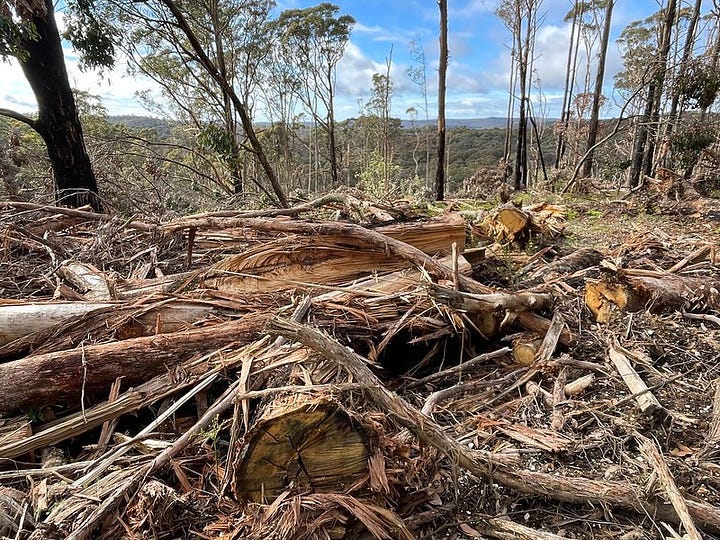

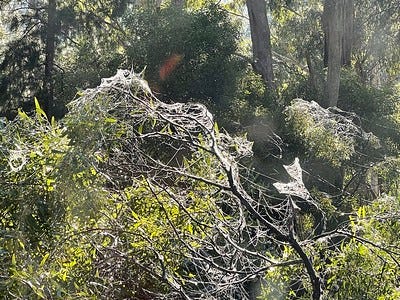
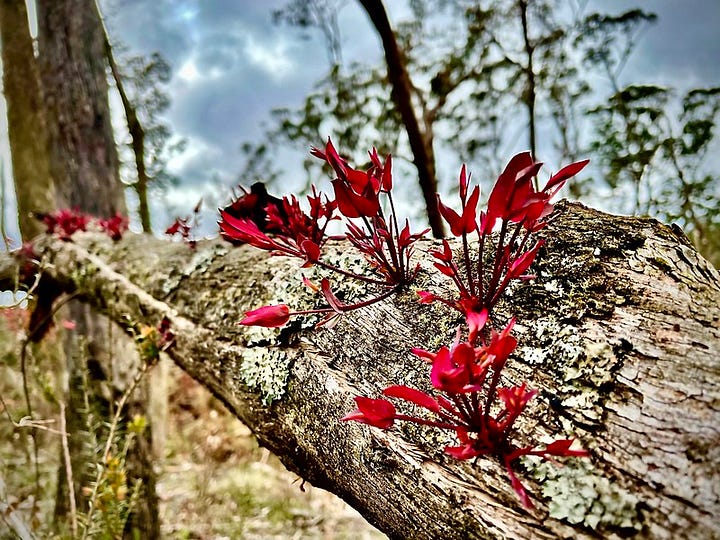
That night shook not just me, but many of our community. On the other side of the state, tragically two people died. We spent 12 hours in high wind and rain, listening to trees crash across the forest and around our homes, never knowing where disaster was hitting hardest—only that it was wreaking havoc all night. The air crackled with static electricity, and the forest was gripped by a violent force. We were like children cowering in our rooms, while others huddled in cars under the pub’s veranda for safety. I lay in bed with my boots on, coat, and helmet nearby, waiting for the moment I’d need to climb out of a crushed house. The events that night connected me to the trees in ways I still don’t fully understand. A tenth of the forest was felled in crop circles the size of football fields. We humans survived. The community around was amazing. They rallied together—a wonderful testament to humanity.
But, like the forest, I felt bent over and cracked. The days afterwards, a strange oily dust hovered a few meters above the forest canopy.
I felt weighed down. Prolonged stress does this—cortisol and adrenaline keep us running on empty. Sleep was fractured. My brain was stuck in problem-solving mode, without solutions. Numb, scattered and wrecked, feelings you might relate—whether from the pandemic or other life stressors.
Then month later, spiderwebs grew over the downed trees in my yard. Another month passed, and the trees began to sprout epicormic growth—the fuzzy shoots we often see after bushfires. It remained unsafe to walk in the forest, with trees coming down all the time. Walking was still difficult, as the paths were covered or cut off. I could not recover here.
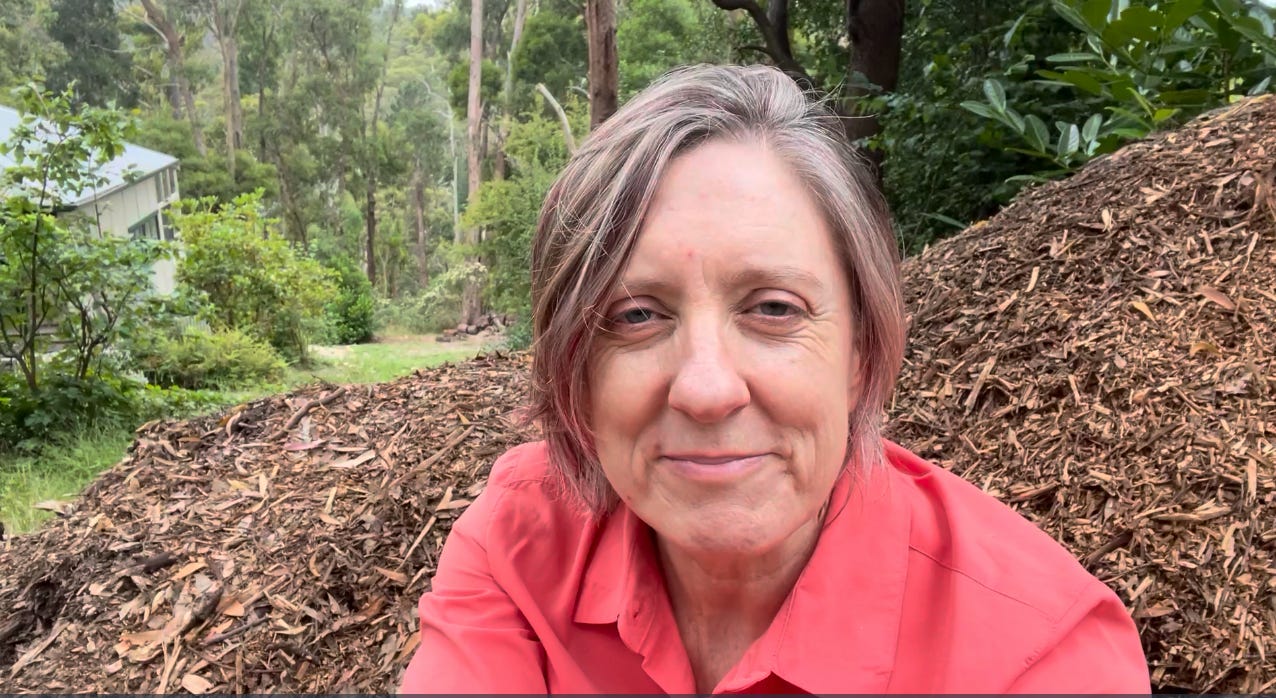
There was a moment when I looked in the mirror and didn’t recognise myself. My skin was dull, my eyes were tired, and life was mechanical. I was wrecked. I couldn’t even remember the joy of small moments or any real sense of clarity.
What would be my version of spiderwebs and regrowth?
Unsticking the emotion
You can be hardened by experience, as I’ve learned from others—having seen the worst events imaginable—yet what eventually shakes you to your core may surprise you. I was never tough, but I had always expected to be challenged by fire or a devastating community ambulance call-out. Instead, it was the storm, the impact on my home, and the loss of my safe place that became the source of overwhelming self-judgment—all the ‘I should have beens’ haunted me.
I had been working for a long time with a wise psychologist. She was the one who introduced me to the Tree of Life idea and taught me how to calm the vagus system. But now, I needed more. She worked with me remotely using EMDR (Eye Movement Desensitisation and Reprocessing), a technique designed to help untangle emotions tied to trauma and reduce PTSD symptoms. It’s a powerful and effective, non-invasive treatment. Unlike traditional talk therapy or drug therapy, EMDR involves rapidly moving your eyes from side to side while recalling the experience and identifying the emotions attached.
One night I sat in my kitchen, being guided by her on-screen through one intense online session. I faced the kitchen wall, moving my eyes as fast as I could from one dot on the wall to another. The sticky shame and guilt rose up in phrases. ‘What were you thinking - living in this forest on you own?’ ‘Of course disaster was going to happen, could you not see that?’ I saw the connection between the storm and childhood experiences. I saw I was like Little Red Riding Hood, trapped in a circle of downed trees. I detached the emotions and the narrative from the sound and experience of the storm, and started to see if for what it was. Not my emergency. Not of my doing. It was a release I didn’t know I needed. When we finished, I went to bed and slept deeply all night.
Finding a guide
After this, I started reaching out. I joined a professional coaching group for mid-career women. Through this I started meeting many wonderful women, all asking similar questions. My coach, Jane, didn’t just teach leadership strategies; she helped me shift from survival mode to possibility. She reminded me that abundance grows through intention. Jane doesn’t know it, but her guidance marked the beginning of Gen2200 thinking—a way of seeing that stretches beyond the present moment.
Filling up with health
Next, I committed to a health program that transformed my relationship with food and movement. I wanted to feel stronger and more capable for the journey ahead, and the program gave me a clear plan to follow. Slowly, my physical strength returned and my emotional steadiness grew, too.
I realised that my exhaustion wasn’t just about overwork—it was also a lack of boundaries and self-care. My diet was junk. As I rebuilt my health, I found myself with more energy and a clearer mind. I had been running on autopilot for years, simply pushing forward without reflection or direction. Stuck is what that gets you!
The ‘Tread Lightly Experiment’ takes root
In the upturned soil of my head, the idea of the Tread Lightly Experiment began to grow.
A slight flicker of determination fanned an idea I could move in circles wider than the forest. I had a car, a tent, lockdown had lifted and the state borders had opened. I could move freely, intuitively, and reconnect with Country each day. The small, everyday decisions—like packing the car—suddenly felt doable.
It was time to go. I could feel the pull of something new. I sat on the chips of fallen trees in my yard—inhaling the sharp, energising scent of eucalyptus—and thought, This is it. This is my moment to step away, to find what’s next.
The ‘Tread Lightly Experiment’ - let’s go!
I wrapped up the year, and on January 16, 2022, I left on what I now call the Tread Lightly Experiment. For the first time in a long while, I wasn’t just taking a break from work—I was embarking on an adventure, one that wasn’t fully mapped out. I had support, I was healthier (though far from perfect), and I was ready. Ready to burst out of my bubble and discover something new.
When people asked where I was headed, I told them I didn’t know. Even that felt energising, almost cheeky. The pandemic restrictions had mostly lifted. It was the perfect time to stretch out.
The goal of the experiment? To see if I could slow time to a crawl by giving the day, and wherever I was, my attention. This wasn’t just about rest—it was about getting to the source of something core and important. I didn’t know what.
I initially shared on socials, though this quickly evolved into a more personal journey and I stopped. Here’s a short YouTube video of me leaving that day and saying goodbye to each room in my house. You’ll get a sense of my intention, and the state of my poor yard.
The importance of listening to yourself
I hear this story repeated every where today—we are a society of burned-out employees and leaders, crushed under deadlines, increasing complexity, and the demand be ‘on.’ We let work distract us, masking our loneliness and discomfort—staying online late, checking emails to avoid the voice within.
Work, especially salaried work, is designed to extract every ounce of energy—that’s the exchange. That’s what we get paid for. But we can’t rely on our workplaces to protect our health, though they should and must. I’ve learned that without personal health, energy, and clarity, no matter how much effort you put in or how many hours you log, the work you do won’t be truly meaningful or productive. It becomes mechanical, draining you further without moving you forward.
Moving forward with Gen2200
The Tread Lightly Experiment has led me to radically new horizons—ones I couldn’t have predicted. It became more than me, it became about all of us and how we navigate the complexities of modern life, the speed of everything, and how we can slow down enough to make thoughtful, meaningful choices.
Gen2200, which grew out of this experiment, holds my ambition to help others, but it also reminds me to stay clear within myself first. I’ve learned that being healthy and present are the foundations for making sound choices. As I connected with myself, I reconnected with my family, made new friends, and rediscovered the things that matter most. I’m healthier now than I’ve ever been, even as I’ve gotten older. I’m clear and ready to put my energy into something worthwhile.
Gen2200 is about thinking beyond the noise of everyday life, and making informed choices that will shape not just our immediate lives, but the long-term future—for our children, our community, and the planet. It’s about slowing down enough to see the bigger picture and act from a place of intention, not reactivity.
Our world pushes us to do more and be more. Gen2200 invites us to take time, think differently, and act with the long-term in mind.
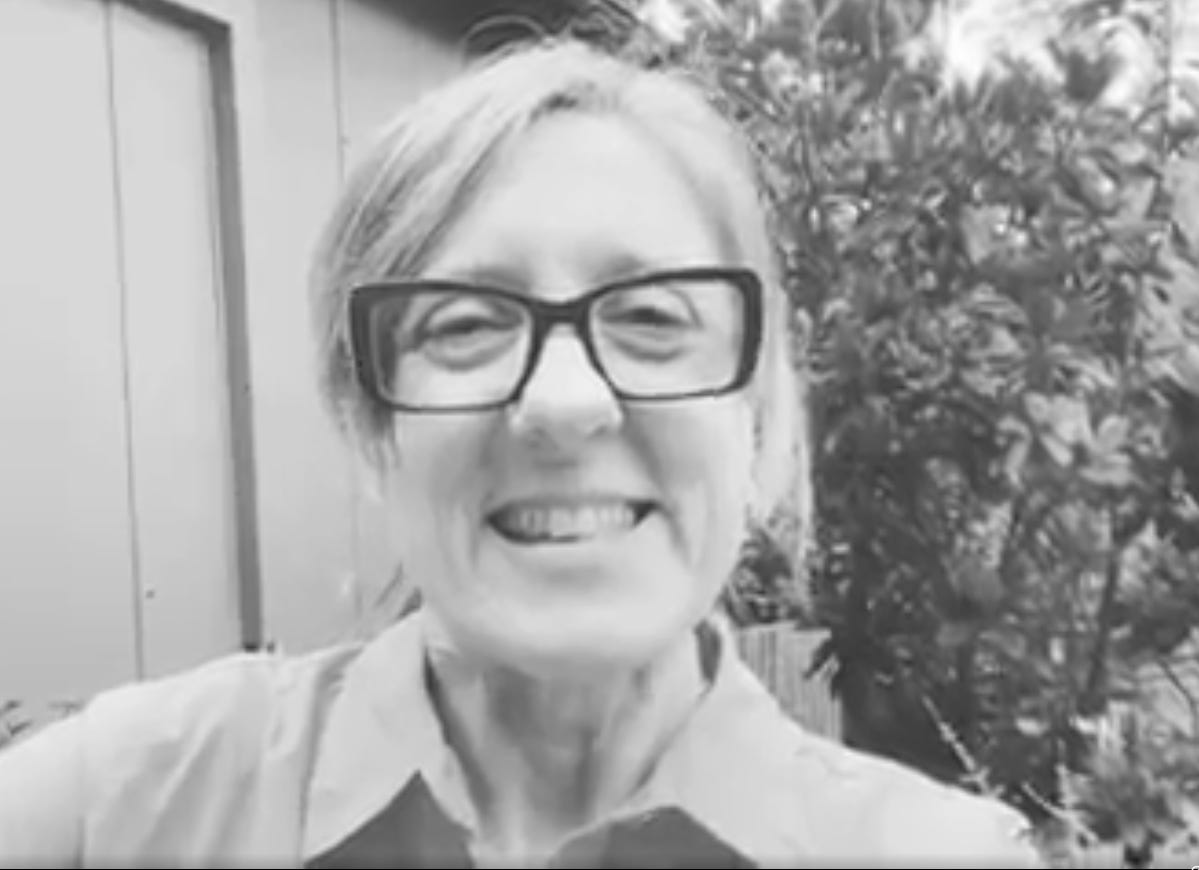
A hint of action
Why not try something for yourself? It doesn’t have to be as drastic as a three-month experiment—small steps lead to big shifts. So, here are a few suggestions—little things you can try right now:
Clarify ‘you’ for you—it takes time and intention
When you’re under stress, it’s easy to think you need to just ‘push through’. But that can be damaging. We get ‘pot committed’ and start growing confirmation bias. Our bodies keep count. Stop and check in with yourself. Be honest—what is your inner voice telling you? That’s where your clarity will come from. Maybe it won’t be loud enough the first time, but over time, that inner voice grows stronger.
You can’t act effectively without health and energy
Don’t go on a holiday exhausted. Don’t keep working while running on empty. What are you doing?! Ask yourself: does this energise or drain me? With that awareness, you can make better choices. When you choose, draw resources towards you—find a way to invest in your physical and mental health. Everyone around you benefits when you do. Especially you.
Don’t know what to do? Experiment
Be brave. You don’t need to know the outcome straight away. Just make it safe enough to take the first step. I had leave to support me during the Tread Lightly Experiment, though today I don’t have that luxury. But I’ve gotten better at making space to experiment—and so will you. It doesn’t have to be something huge like leaving your home, but it does need to feel a little ‘out there’. I promise, it’s well worth it.
This experiment has led me to places I couldn’t have predicted, but the journey is just beginning. As I moved through the Tread Lightly Experiment, I learned that small steps, even the ones that felt uncertain or ‘out there’, created the space for clarity and change.
Your turn
Now, what about your journey?
What experiments, big or small, have you tried in your life?
How have they shaped your path, and what did you learn from them?
What about now? Where are you currently in your journey?
Your experiences matter. What are your insights as you’ve been reading? We’re all learning from one another. Share away in the comments!
Where to next?
The Tread Lightly Experiment started as a quest to slow down and reclaim time, stepping away from the daily rush. But as the journey unfolded, it became clear that the choices being made weren’t just about the present. They carried weight far beyond the moment—rippling forward into a future that couldn’t yet be seen.
In the next post, we’ll explore how this shift led to the practice of multigenerational decision-making, where small, intentional, and often very easy, steps can shape a lasting impact.
Rolling takeaways from posts
1. The Case for Quiet is Strong – Post 1 There’s a time to speak, especially in times of uncertainty. Words can set things in motion.
2. Key concepts of Gen2200 – Post 2: Gen2200 is about making decisions today with long-term, multigenerational thinking in mind.
3. Blame the system – Post 3: Systems shape behaviour. When things go wrong, it’s often the system at fault, not the person.
4. Consume or participate? – Post 4: Reflect on your relationship with the world—are you simply consuming the landscape, or are you participating within it?
5. Listening to the inner voice – Post 5: The most important insights often come from within. Make space to hear and understand your inner voice—it’s the compass that will guide you toward clarity, balance, and meaningful action.
Ps: If you enjoyed the photos, feel free to explore more on my Flickr site.


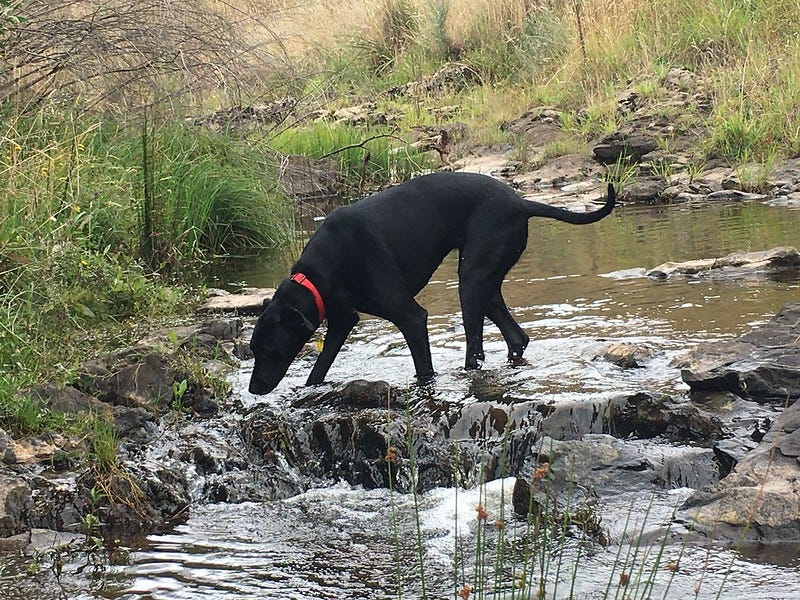
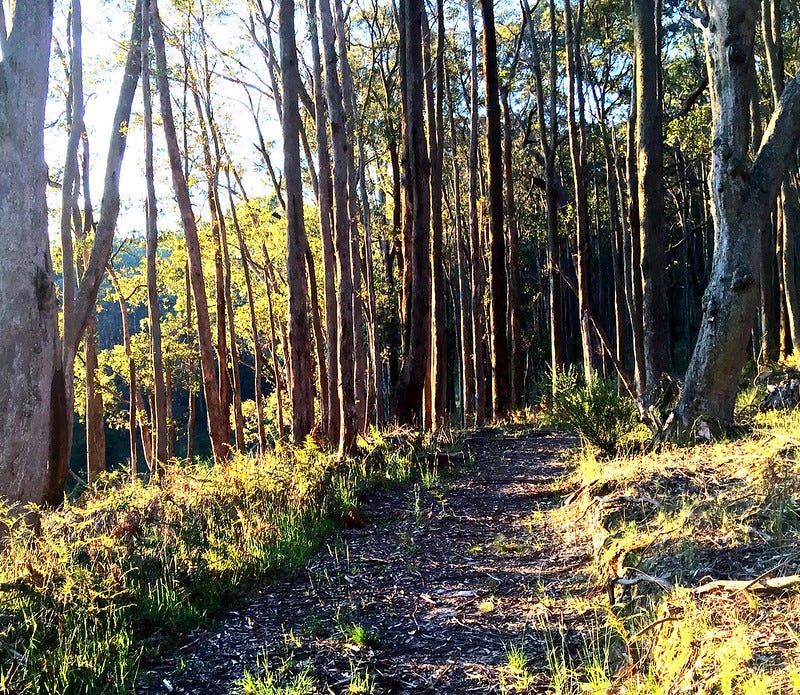
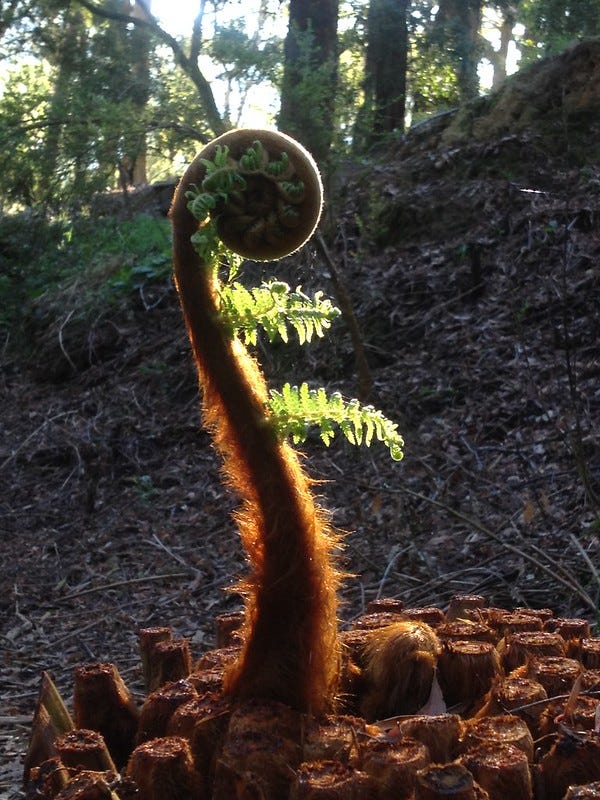
Oh wise Julianne. You say this all so beautifully clearly. It's not a self improvement that we need at all. Personal enrichment, yes. Then the possibilities open. Thank you for taking the time to comment. This means so much. ♥️💫
Truly flexible people notice structures, they notice the structures they are participating in, they know the ‘obligations’ they have to those structures, and yet flexible people feel confident, from time to time, when they need to , to destroy these structures.
I read The Tread Lightly Experiment as a trek into the liminal space between work and non-work, a suspended space where identity becomes blurry, and the unconscious is given the peace and quiet to do its important work on the self.
I hope your readers know, Jax, that anyone can safely take this time away from work and family obligations for personal enrichment. The sky won’t fall, the mortgage will still be paid, your family will survive. But be beware, at the end of your Tread Lightly Experiment – you won’t be able to submit a summary, you won’t be able to measure the results, you won’t be able to count the profits. And you can tell others – your time away was great and yet you haven’t ‘improved’ at all!